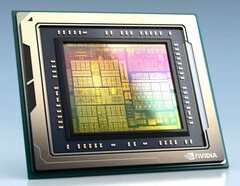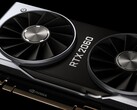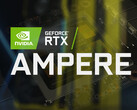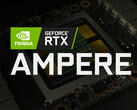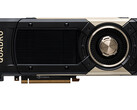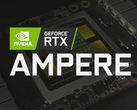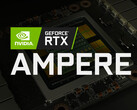Previous Ampere leaks strongly suggested that Nvidia’s next gen gaming GPUs should be released on TSMC’s 7 nm node, and this makes a lot of sense considering that AMD is already planning to release its second gen 7 nm GPUs this summer. The confirmation should come with the GTC 2020 event where Nvidia is supposed to announce the next gen GPUs, although we already know that the Nvidia CEO is not going to deliver any live or streamed keynotes this year due to coronavirus concerns. Until then, though, a new rumor is claiming that the upcoming gaming GPUs might not actually use any 7 nm tech, allowing AMD to possibly match the performance of the upcoming high-end GPUs with the RDNA2 models.
This information comes from Twitter user CorgiKitty, who is relatively new to the leaks scene, so we might need some additional salt this time. Apparently, the GA102 (the high-end chip on which all SKUs for the next gen GPUs will be based on) is manufactured on Samsung’s 10 nm node. The CUDA core count will not be doubled, although the FP32 unit count will be. Performance-wise, we should expect RTX improvements, with very minor rasetrization engine improvements, and the gains over the RTX 2080 TI could be under 40%. 2-way SLI will only be available on the high-end GA102 model, yet the RTX support is now extended to all the SKUs, including the entry-level GTX 1650 successors (possibly even on the laptop MX models).
If this is indeed the case, AMD could have a considerable advantage with the refined 7 nm process and the improved RDNA2 architecture that is expected to bring ray tracing support. AMD will most likely not take the lead, but it will for sure be breathing down Nvidia’s neck once again.
I first stepped into the wondrous IT&C world when I was around seven years old. I was instantly fascinated by computerized graphics, whether they were from games or 3D applications like 3D Max. I'm also an avid reader of science fiction, an astrophysics aficionado, and a crypto geek. I started writing PC-related articles for Softpedia and a few blogs back in 2006. I joined the Notebookcheck team in the summer of 2017 and am currently a senior tech writer mostly covering processor, GPU, and laptop news.
> Expert Reviews and News on Laptops, Smartphones and Tech Innovations > News > News Archive > Newsarchive 2020 03 > No 7 nm for Nvidia's upcoming Ampere gaming GPUs
Bogdan Solca, 2020-03-11 (Update: 2020-03-12)




